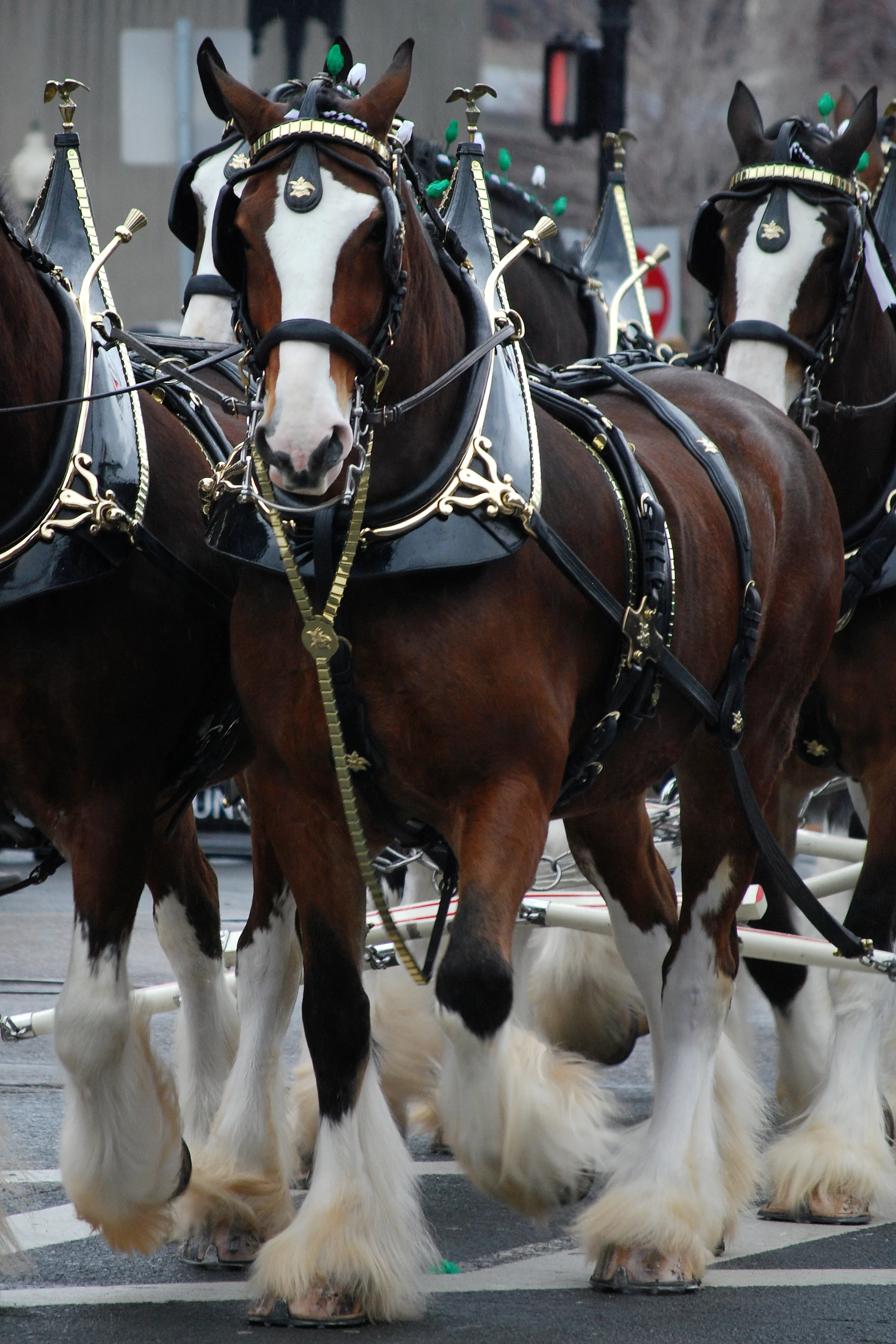Every February, millions of people gather around their televisions to watch two teams battle it out for the Super Bowl title. Some people actually watch it for the game, others for the advertising, but some of us watch it for the Budweiser Clydesdales.
In order to appreciate the Clydesdales’ place in the Budweiser tradition, we need to start at the beginning. Adolphus Busch arrived in America in 1857 and founded his own brewing supply house. He partnered with his father-in-law to form the Anheuser-Busch Company in St. Louis, Mo. While Americans were fond of darker beers at the time, Busch wanted to create a truly American beer. When he introduced Budweiser Lager Beer in 1876, it was an instant success. By 1901, Anheuser-Busch had produced more than a million barrels of beer.
Of course, Anheuser-Busch’s beer boom came skidding to a halt when Prohibition began in 1920. While many brewing companies disappeared, Anheuser-Busch managed to get through the tumultuous period by creating other products, such as Bevo, a non-alcoholic cereal beverage (which only lasted until 1929), ice cream, malt syrup, bus bodies, refrigerated trucks and baker’s yeast.
When Congress adopted the 21st amendment to the Constitution overturning Prohibition in 1933, August Busch Jr. and Adolphus Busch presented their father, August Busch Sr., with a six-horse Clydesdale hitch. Father, sons and the teams’ drivers, Art Zerr and Billy Wales, were reduced to tears, and the phrase “crying in your beer” was born. One of the teams’ first task, which became an iconic gesture, was delivering Budweiser to President Franklin D. Roosevelt, who had been instrumental in repealing Prohibition.
While the Clydesdale breed was developed in Scotland more than 300 years ago, the horses have become famous and protected in the United States, thanks to that gift in 1933. They make appearances all over the country and the world, including participating in Harry Truman and Bill Clinton’s inauguration parades in 1949 and 1993.
ADVERTISEMENT
There are five traveling Budweiser Clydesdale hitches, which are based in St. Louis, Mo., Menifee, Calif., San Diego, Calif., Merrimack, N.H., and San Antonio, Texas. There are also Clydesdales at the Anheuser-Busch breweries in St. Louis, Merrimack, and Ft. Collins, Colo.
Grant’s Farm, the 281-acre ancestral home of the Busch Family in St. Louis, also holds a herd of horses.
Of course, in order to be a Budweiser Clydesdale, you have to be something special.
Budweiser Clydesdale Qualifications:
- Must be a gelding
- Must be at least 4 years old
- Must be 18 hands or 6 feet at the withers
- Must weigh 1,800-2,300 pounds.
- Bay in color
- Four white stocking feet
- White blaze
The official home of the Budweiser Clydesdales is a brick and stained-glass stable built in 1885 on the 100-acre Anheuser-Busch brewery complex in St. Louis. The building is one of three structures on the site that is registered as a historic landmark by the federal government.
When the Clydesdales are scheduled to make an appearance, it takes a massive effort to get all of their equipment organized. They travel, along with all of their equipment, in three 50-foot tractor-trailers. Grooms travel on the road with them, and they travel 10 months out of the year.
ADVERTISEMENT
When the Clydesdales are hitched to their beer wagons, the drivers are carrying nearly 75 pounds of reins and weight from the horses. In addition, each harness and collar weighs 130 pounds. The harnesses are hand made from brass and leather, and pure linen thread is used for the stitching. The harnesses fit most of the Clydesdales, but the collars are individually fitted to each horse. Their horseshoes measure more than 20 inches from end to end and weigh about 5 pounds.
The Budweiser Clydesdales’ companion, the Dalmatian, was introduced in the 1950s. The dogs were used to guard the hitch and protect the beer as the driver made his deliveries. Dalmatians were also used to guide horse-drawn fire carts.
Which commercial is your favorite?
One of web writer Coree Reuter’s favorite parts of working at The Chronicle of the Horse is adventuring up into the attic. While it’s occasionally a journey that requires a head lamp, GPS unit and dust mask, nearly 75 years of the equine industry is documented in the old issues and photographs that live above the offices, and Coree is determined to unearth the great stories of the past. Inspired by the saying: “History was written on the back of a horse,” she hopes to demystify the legends, find new ones and honor the horses who have changed the scope of everyday life with this blog.
Curious about anything in particular? Have a question or an interesting topic? Please e-mail Coree, she’d love to hear from you!















